The world is a fascinating place, full of wonders that captivate and inspire. But beyond the breathtaking beauty of mountains, oceans, and forests, there are places that defy logic and stir up a sense of mystery. These places are so bizarre and unique that they seem almost otherworldly. From haunted forests to bubbling blue lava, here are the top seven weirdest places on Earth that will leave you both intrigued and bewildered.
1. Blood Falls, Antarctica
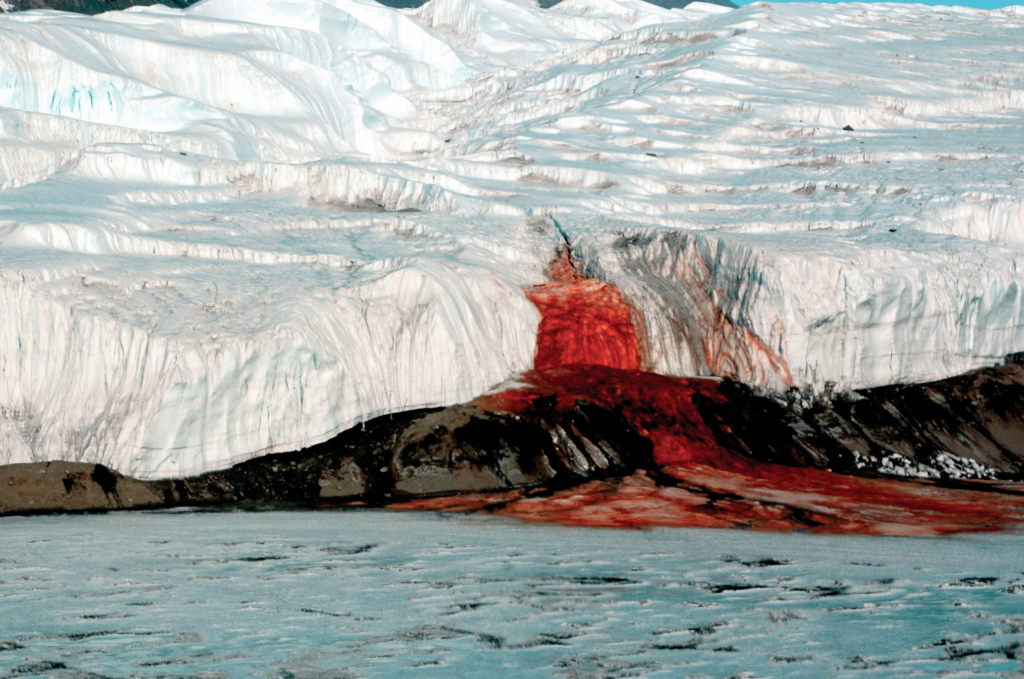
Antarctica is known for its vast, icy expanses, but hidden within this frozen continent is a phenomenon that baffles scientists and fascinates adventurers: Blood Falls. Located in the McMurdo Dry Valleys, this waterfall oozes a deep red liquid, reminiscent of blood, from the Taylor Glacier. The sight is eerie and inexplicable at first glance, but there is a scientific explanation behind it.
Blood Falls is the result of iron-rich, saltwater trapped under the glacier for millions of years. As the glacier slowly melts, the water, oxidized by the air, turns a vivid red. This process is akin to what happens when iron rusts. The discovery of Blood Falls dates back to 1911, and for years, the source of the red color remained a mystery. Today, it serves as a reminder of the hidden, ancient ecosystems locked beneath our planet’s surface.
World Statistics:
Antarctica is the coldest, windiest, and driest continent on Earth, with about 98% of it covered by ice. Despite these harsh conditions, the continent hosts numerous scientific research stations from over 30 countries, studying everything from climate change to unique microbial life.
2. Socotra Island, Yemen

Imagine an island that looks like it belongs on an alien planet rather than Earth. That’s Socotra Island, located in the Arabian Sea, off the coast of Yemen. This remote island, often referred to as the “most alien-looking place on Earth,” is home to some of the weirdest flora and fauna you’ll ever encounter.
The Dragon’s Blood Tree, with its umbrella-like canopy and blood-red sap, is perhaps the most iconic of Socotra’s unique species. The island’s isolation from mainland Africa for millions of years has resulted in a biodiversity that is one-third endemic, meaning these plants and animals are found nowhere else on Earth. The bizarre landscape, dotted with strange, twisted trees and unusual plants, has earned Socotra a place on UNESCO’s World Heritage list.
World Statistics:
Socotra Island covers approximately 3,796 square kilometers and is home to around 60,000 people. It has been dubbed the “Galápagos of the Indian Ocean” due to its unique biodiversity, with nearly 700 species of flora and fauna found exclusively on the island.
3. Lake Natron, Tanzania
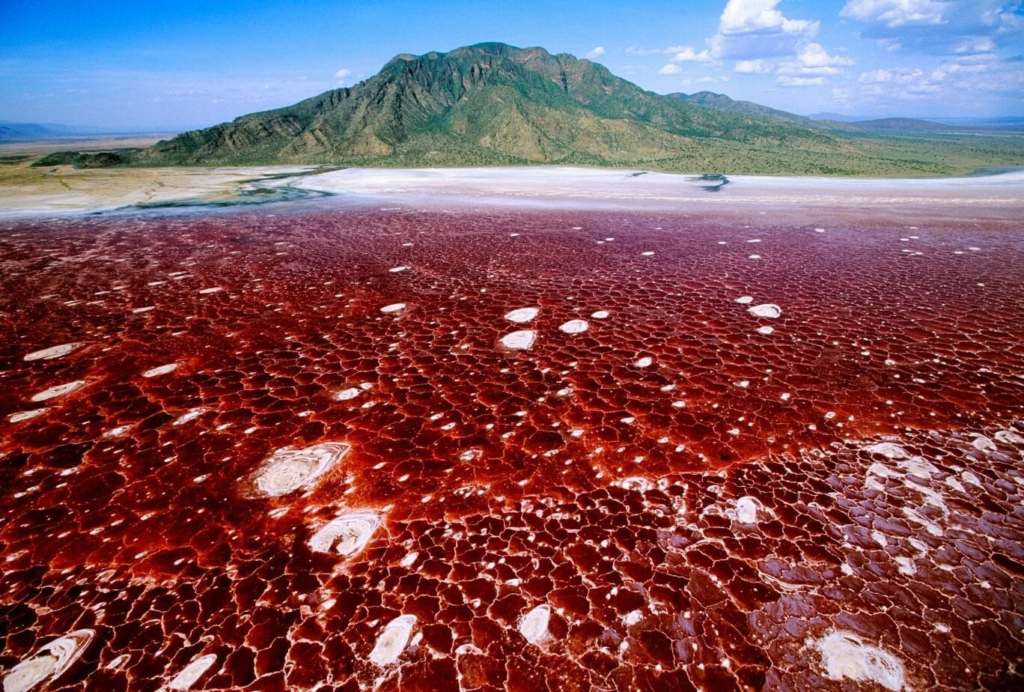
Lake Natron in Tanzania is a place where the line between life and death is strikingly thin. The lake’s waters are so alkaline and caustic that they can burn the skin and eyes of animals that aren’t adapted to it. But what’s truly eerie about this lake is how it seems to turn animals into stone.
The water of Lake Natron can reach temperatures of up to 140°F (60°C) and has a pH as high as 10.5, almost as alkaline as ammonia. The lake’s chemical makeup includes a high concentration of sodium carbonate, a preservative used by the ancient Egyptians for mummification. As a result, animals that die in or around the lake are calcified, preserved as eerie statues, giving the appearance of being turned to stone. However, despite its deadly reputation, the lake is a vital breeding ground for the lesser flamingo, which thrives in this harsh environment.
World Statistics:
Lake Natron covers an area of about 1,040 square kilometers and is part of the East African Rift Valley. The region is one of the most tectonically active areas on the planet, with frequent earthquakes and volcanic activity.
4. Lake Hillier, Australia
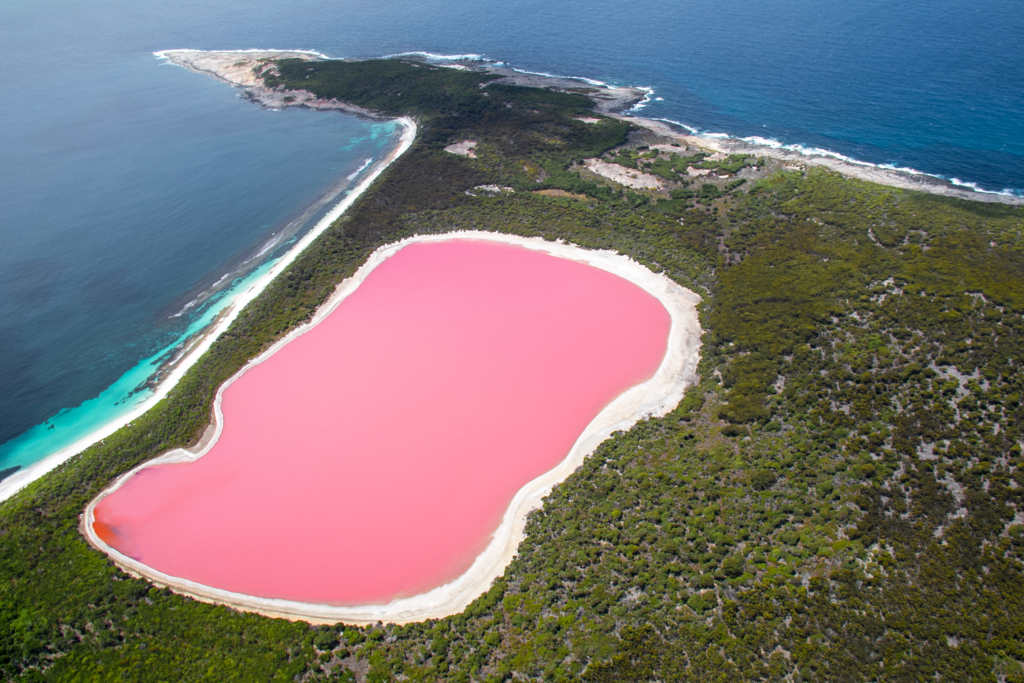
Lake Hillier, located on Middle Island off the southern coast of Western Australia, is one of the most visually stunning natural wonders on the planet. This saltwater lake is famous for its striking bubblegum-pink color, which remains a mystery to scientists. Unlike other colorful lakes, which change hues with the seasons, Lake Hillier’s pink color is permanent. The vibrant hue is most likely due to the presence of the algae Dunaliella salina and certain types of bacteria that thrive in the high-salinity environment. The contrast between the lake’s pink waters and the deep blue of the surrounding ocean creates a surreal and picturesque landscape that attracts visitors from all over the world. Despite its unusual appearance, Lake Hillier is safe to swim in, though access to the island is limited to protect its unique ecosystem.
World Statistics:
Australia is home to several other unusual bodies of water, including the Hutt Lagoon and the Pink Lake, but Lake Hillier stands out for its consistent color. The lake is relatively small, only about 600 meters long, but its distinctive hue makes it one of the most famous pink lakes in the world. The phenomenon of colored lakes is rare, making Lake Hillier a must-see for those intrigued by the planet’s natural oddities.
5. The Great Blue Hole – Belize
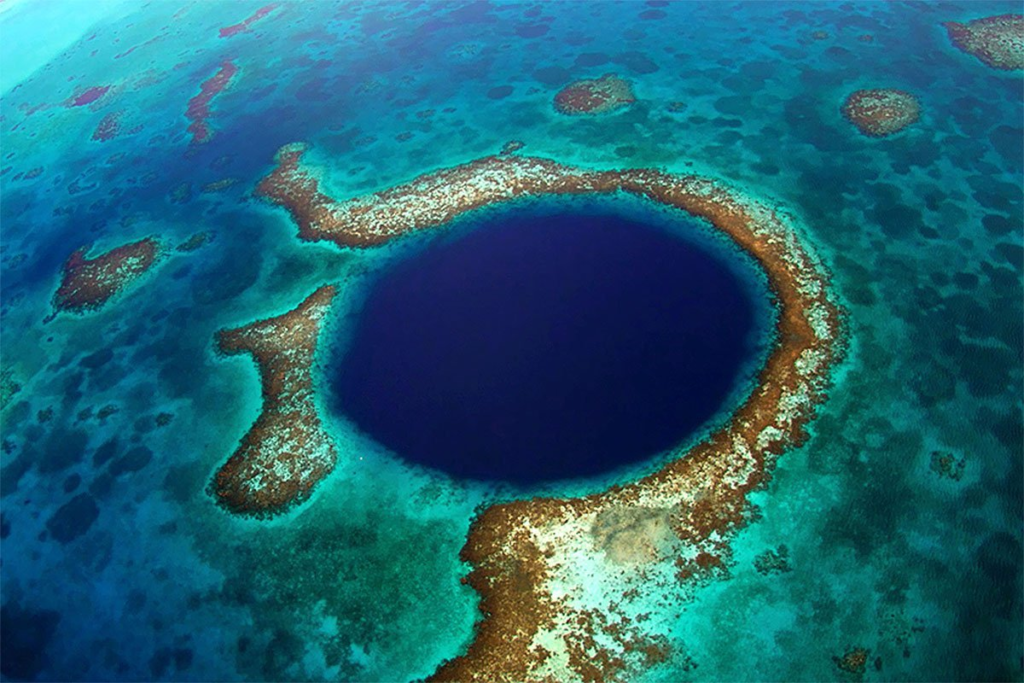
The Great Blue Hole, located off the coast of Belize, is one of the most striking and mysterious natural formations on the planet. This massive underwater sinkhole, part of the Belize Barrier Reef Reserve System, is a near-perfect circle with a diameter of 318 meters and a depth of 124 meters. It was formed during the last glacial period, over 150,000 years ago, when sea levels were much lower.
The Great Blue Hole is a diver’s paradise, offering an unparalleled underwater experience. The crystal-clear waters reveal a world of stalactites, limestone formations, and a rich array of marine life, including sharks, parrotfish, and giant groupers. The deeper you go, the more the environment changes, with the water becoming cooler and the colors fading into a deep blue hue that gives the site its name.
What makes the Great Blue Hole particularly intriguing is its geological history and the mystery that surrounds its formation. Scientists believe that it was once a dry cave, part of an ancient limestone system, which collapsed and flooded as sea levels rose. The Great Blue Hole offers a glimpse into the Earth’s distant past and serves as a natural laboratory for studying the effects of climate change and sea-level rise.
Despite its beauty, the Great Blue Hole remains one of the most enigmatic and challenging dive sites in the world. It’s a place where the boundaries between land and sea blur, and where the mysteries of the deep ocean come to life.
Location: Lighthouse Reef, Belize
Coordinates: 17.3151° N, 87.5345° W
Diameter: 318 meters (1,043 feet)
Depth: 124 meters (407 feet)
Formation: Over 150,000 years ago
Divers Annually: Approximately 15,000
6. The Richat Structure, Mauritania

The Richat Structure, also known as the Eye of the Sahara, is a massive geological formation in the Sahara Desert of Mauritania. From the ground, it might look like an ordinary rocky landscape, but from space, it’s a different story. The Richat Structure appears as a huge, circular pattern, resembling a giant eye staring up at the sky.
This bizarre formation is about 40 kilometers in diameter and was once thought to be the impact site of a meteorite. However, geologists now believe it’s a natural geological dome that has been eroded over millions of years. The concentric circles of the structure have led to various theories, from the remnants of the lost city of Atlantis to alien-made artifacts. Despite the speculation, the Eye of the Sahara remains one of the most peculiar and mysterious natural formations on Earth.
World Statistics:
The Sahara Desert, where the Richat Structure is located, is the largest hot desert in the world, covering over 9 million square kilometers. It stretches across 11 countries and is one of the harshest environments on the planet.
7. Kawah Ijen, Indonesia
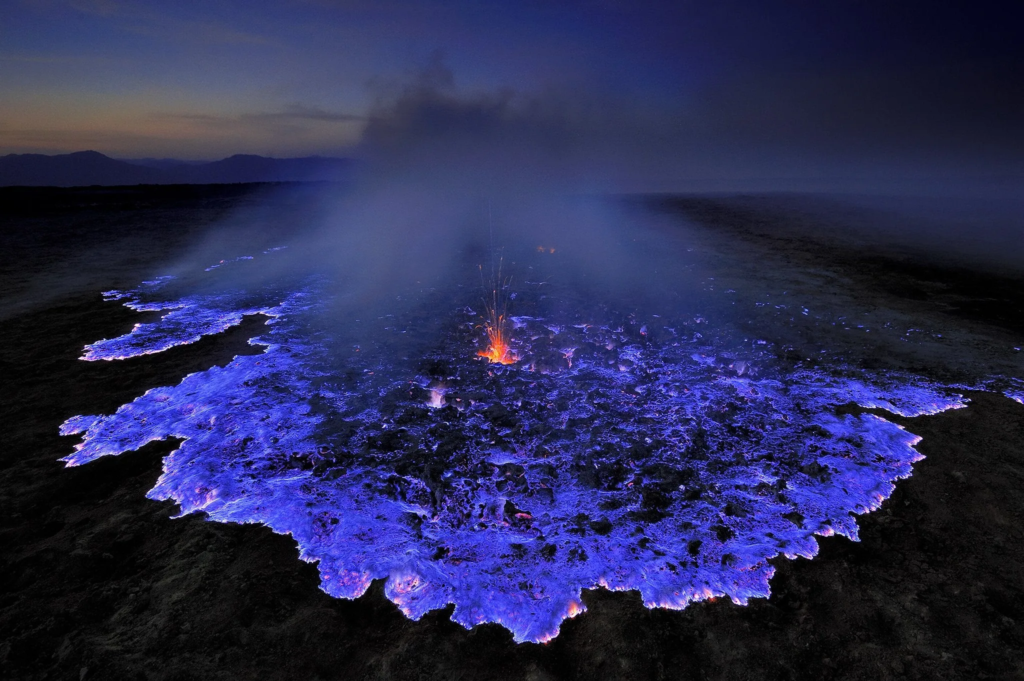
On the Indonesian island of Java lies Kawah Ijen, a volcano with a stunning, yet deadly, secret. At night, this active volcano glows with an eerie blue light, a phenomenon so strange that it seems straight out of a fantasy novel. This blue glow is not the result of lava but of burning sulfuric gases.
The volcano’s crater contains a large sulfur mine, and the gases that escape from cracks in the volcano ignite upon contact with the oxygen-rich air, burning with a bright blue flame. The sight is both mesmerizing and dangerous, as the miners who work in these extreme conditions face serious health risks from the toxic fumes. Kawah Ijen’s blue flames are one of the few examples of this phenomenon occurring naturally, making it a truly unique and weird place on Earth.
World Statistics:
Indonesia is home to over 130 active volcanoes, making it part of the Pacific Ring of Fire. The country’s population of more than 270 million people lives with the constant threat of volcanic eruptions, earthquakes, and tsunamis
Our planet is filled with places that challenge our understanding of the natural world. From the freezing red waterfalls of Antarctica to the burning blue flames of Indonesia, these seven locations represent some of the most bizarre and fascinating phenomena on Earth. They remind us that despite our advanced technology and scientific knowledge, there are still mysteries to be unraveled and wonders to be discovered. Each of these places offers a glimpse into the strange and often unpredictable forces that shape our world, leaving us in awe of the planet we call home. Whether you’re an adventurer seeking the thrill of the unknown or simply a curious mind, these weird places will undoubtedly spark your imagination and leave you with a sense of wonder.
Read also: Things to Avoid While Traveling for the First Time





